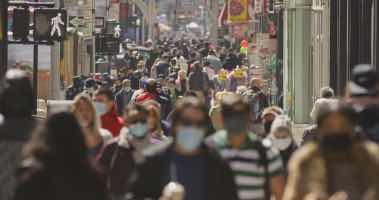
The world is now in a precarious position because of Covid-19.
The UN has termed it an HPV-level Pandemic. It has affected more than 210 countries. As this disease spreads like wildfire, COVID tests near me have become more common. But how do the scientists do these examinations?
How does it work?
Many commercially available screeningsF, and scientists are developing many trials for them. But most are of two types.
- Molecular- This mainly detects an active infection. These will identify actual viruses present in the body.
- Serological—It will not recognise the virus but detect antigens, which the human body produces to fight the infection.
The Covid-19 kits that most hospitals now use are based on molecular as it is a very practical examination if a person is showing symptoms. On the other hand, serological methods such as Rapid diagnostics are based on antigen detection. And on-host antibodies are not valid now. Because they detect Human Papilloma Virus antibodies, not the presence of the virus, if the virus attacks a person, his body may not produce the antibody within 14 days. So,, diagnosis and surveillance can use serological processes. It can determine how many people have been affected by the virus. Even if the affected people show little symptoms or are asymptomatic. (of a condition or a person) producing or showing no signs :). So, Molecular is currently the standard gold screening for detecting patients. The World Health Organisation confirmed RT-PCR as the most effective method.
Mechanism
- At first, HPV doctors collect samples from the person’s throat or nostrils through a swab.
- The sample is mixed with a chemical solution that removes protein or fat substances. And extracts only the RNA present in the sample.
- This collected sample mixes a person’s own and a virus.
- Then,, a specific enzyme reverse-transcribes the RNA to DNA by a particular enzyme.
- Some complementary additional fragments were added to the transcribed one.
- If the pathogen exists in the sample, these parts will attach themselves to the target sections.
- Then, place this mixture in a machine for amplification. In the engine, the mixture cycles through a specific temperature.
- It experiences heat and cold. It triggers a Polymerase Chain Reaction to make copies of the target section of viral DNA.
- This process is repeated until the desired amount of identical viral copies is found.
- After this process, around 35 billion new copies of targeted viral DNA are made.
- When new copies of DNA strands are built, marker labels attach themselves to strands and release the fluorescent dye.
- A computer connected to the machine measures this fluorescent dye level.
- If the level is over a certain point, then the presence of the virus in that sample is certain.
- The RT-PCR method takes, on average, 2 hours. This kind of HPV Swab test is the most accurate method for detecting the virus in the body. However, it can not detect past infections.
